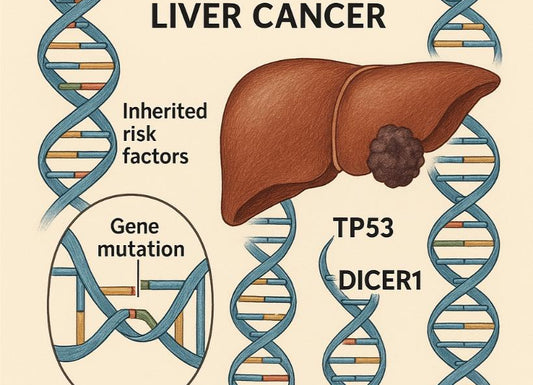Fatty Liver Symptoms on Face: A Comprehensive Guide
 Written By
Yusela Aquino
Written By
Yusela Aquino

Fatty liver disease develops silently, often without symptoms. Your face, however, may be able to show the changes you cannot detect. Your skin, in particular, can reflect your current health. If the liver is struggling to process toxic substances and fats in an efficient manner, your complexion can show the problem. If you recognize these facial signs early, it can be the key to seeking timely intervention and making lifestyle changes.
Facial redness, puffiness, rashes around the mouth, and yellowing of the skin and “whites” of the eyes, rosacea, and itching may indicate that your liver is having an issue, like fatty liver disease. Aside from these signs, you can also monitor your liver’s health at home and take action before it progresses!
Fatty Liver Symptoms on Face: What to Look For
Liver function directly affects skin health. When the liver fails to filter toxins properly, they accumulate and impact the skin’s appearance. Some common facial symptoms include:
- Increased redness – Particularly around the nose and cheeks
- Dull skin tone – Lack of proper circulation and toxin buildup can make skin appear lifeless
- Puffiness – Poor liver function can cause fluid retention, leading to swelling
- Dark circles under the eyes – Indicating poor detoxification and circulation
- Persistent dryness and itching – Often due to inflammation and reduced hydration
These symptoms result from impaired blood circulation, fluid imbalance, and oxidative stress, which accelerate skin aging and inflammation. If you notice persistent changes, it may be time to assess your liver health.
How Liver Toxins Impact Skin Health
When the liver becomes overwhelmed with fat accumulation and inflammation, its efficiency to break down harmful substances and neutralize toxins declines. This can lead to:
- Oxidative stress – a state where there is excessive free radicals, damaging skin cells, leading to premature aging
- Increased inflammation – resulting in redness, irritation, and rashes
- Dryness and uneven skin tone – due to impaired detoxification that affects hydration levels
If your skin appears red, swollen, or dull despite proper skincare, your liver may be struggling to cope with the stress it is under.
Early vs. Advanced Facial Signs of Fatty Liver

Facial symptoms may be subtle and non-specific in the early stages of fatty liver disease:
- Mild puffiness
- Occasional redness
- Slightly dull complexion
In advanced stages, symptoms become more pronounced:
- Persistent puffiness and swelling
- Significant redness and irritation
- Chronic dryness
- Yellowing of the skin and whites of the eyes (also known as jaundice)
These changes suggest worsening liver function and should not be ignored.
Signs of Fatty Liver Disease Visible on the Face

NAFLD is one of the most common liver conditions, linked to poor diet, insulin resistance, and obesity. One of the most noticeable signs is a dull complexion, often accompanied by uneven skin tone due to reduced circulation and toxin buildup. Other symptoms include:
- Redness or blotchiness – especially around the nose and cheeks
- Excessive oiliness or sudden acne – due to hormonal imbalances related wuth liver dysfunction
- Dark under-eye circles – a sign of systemic inflammation and poor detoxification
How to Distinguish Liver-Related Skin Symptoms from Other Conditions
Many common skin conditions share similar symptoms with liver-related changes. Here’s a comparison:
|
Symptom |
Possible Liver-Related Cause |
Non-Liver-Related Causes |
|
Facial redness |
Liver inflammation, toxin buildup |
Rosacea, sun exposure, allergies |
|
Puffiness |
Fluid retention from poor detoxification |
Lack of sleep, high salt intake |
|
Dark circles |
Impaired liver detoxification |
Fatigue, genetics |
|
Dry, itchy skin |
Liver inflammation, bile flow issues |
Eczema, dehydration, harsh skincare products |
|
Acne/oiliness |
Hormonal imbalances due to liver dysfunction |
Stress, diet, clogged pores |
If your symptoms persist despite skincare changes, consider evaluating your liver health.
The Mechanisms Behind: How Fatty Liver Affects Facial Appearance
The liver plays a key role in regulating:
- Hydration – liver dysfunction may contribute to dry, flaky skin due to nutrient imbalances and fluid retention issues
- Collagen production – since the liver helps metabolize proteins, impaired function can affect collagen levels, potentially leading to premature aging and loss of skin elasticity
- Detoxification – while the liver filters toxins, most common skin concerns like acne and redness are influenced by multiple factors like hormones, diet, and genetics. Severe liver disease, however, can cause visible skin changes like jaundice or persistent redness.
If skincare alone isn’t improving your skin concerns, seek help from a medical professional as your skin concerns may be caused by an internal problem.
Other Facial Symptoms Associated with Liver Disease
Aside from fatty liver disease, other liver diseases can cause:
- Spider veins – tiny, visible blood vessels on the face due to poor circulation
- Chronic itchiness – a potential sign of bile flow issues
- Yellowish skin tint – even if jaundice hasn’t fully developed, a slight yellow tone may indicate liver stress
Can Fatty Liver Cause Facial Redness or Rosacea?

Many people with fatty liver disease experience persistent facial redness, especially around the cheeks and nose. This may be mistaken for rosacea but is often linked to:
- Systemic inflammation – Liver dysfunction increases inflammation, affecting blood vessels
- Blood vessel dilation – Weakened by oxidative stress, vessels become more visible
- Poor detoxification – Toxin buildup contributes to redness and skin sensitivity
If facial redness doesn’t improve with typical treatments, consider evaluating your liver health.
How to Support Liver Health for Clearer Skin
- Beyond at-home testing, proactive steps can improve both liver function and skin health:
- Adopt a liver-friendly diet – Focus on whole foods, fiber, and healthy fats while reducing sugar and processed foods.
- Stay hydrated – Proper water intake supports detoxification and skin hydration.
- Limit alcohol and medications – Excessive alcohol and certain drugs can strain the liver.
- Use antioxidant-rich skincare – Ingredients like vitamin C and niacinamide can help counter oxidative stress.
- Monitor your liver health – At-home testing can track key liver function markers.
Take Control of Your Liver Health with Ribbon Checkup
If you notice facial changes that could be linked to fatty liver disease, taking action early is crucial. One of the easiest ways to monitor your liver health is with at-home testing. Ribbon Checkup offers a reliable at-home urine test kit that includes a liver function test, helping you track key markers of liver health conveniently. Early detection can empower you to make dietary and lifestyle adjustments before symptoms progress.
Conclusion
Your face can provide early warning signs of liver distress, from redness and puffiness to dark under-eye circles and dryness. While skincare can help manage symptoms, addressing the root cause—your liver health—is key. By recognizing these signs early and making proactive changes, you can support your liver’s ability to detoxify and heal. Consider using Ribbon Checkup’s at-home liver test to gain valuable insights and take control of your health today!
References
Johns Hopkins Medicine. (2024, October 7). https://www.hopkinsmedicine.org/health/conditions-and-diseases/nonalcoholic-fatty-liver-disease
Koulaouzidis, A., Bhat, S., & Moschos, J. (2007). Skin manifestations of liver diseases. Annals of Hepatology, 6(3), 181–184. https://doi.org/10.1016/s1665-2681(19)31926-x
Li, C. (2003). Spider angiomas in patients with liver cirrhosis: Role of vascular endothelial growth factor and basic fibroblast growth factor. World Journal of Gastroenterology, 9(12), 2832. https://doi.org/10.3748/wjg.v9.i12.2832
WebMD Fatty Liver Disease Reference Library. (n.d.). WebMD. https://www.webmd.com/fatty-liver-disease/medical-reference/default.htm

Yusela is a medical student with a degree in Biology and a strong foundation in health communication. With experience in both research and clinical settings, she writes clear, evidence-informed content to help patients and caregivers better understand liver health, chronic disease, and transplant care.



